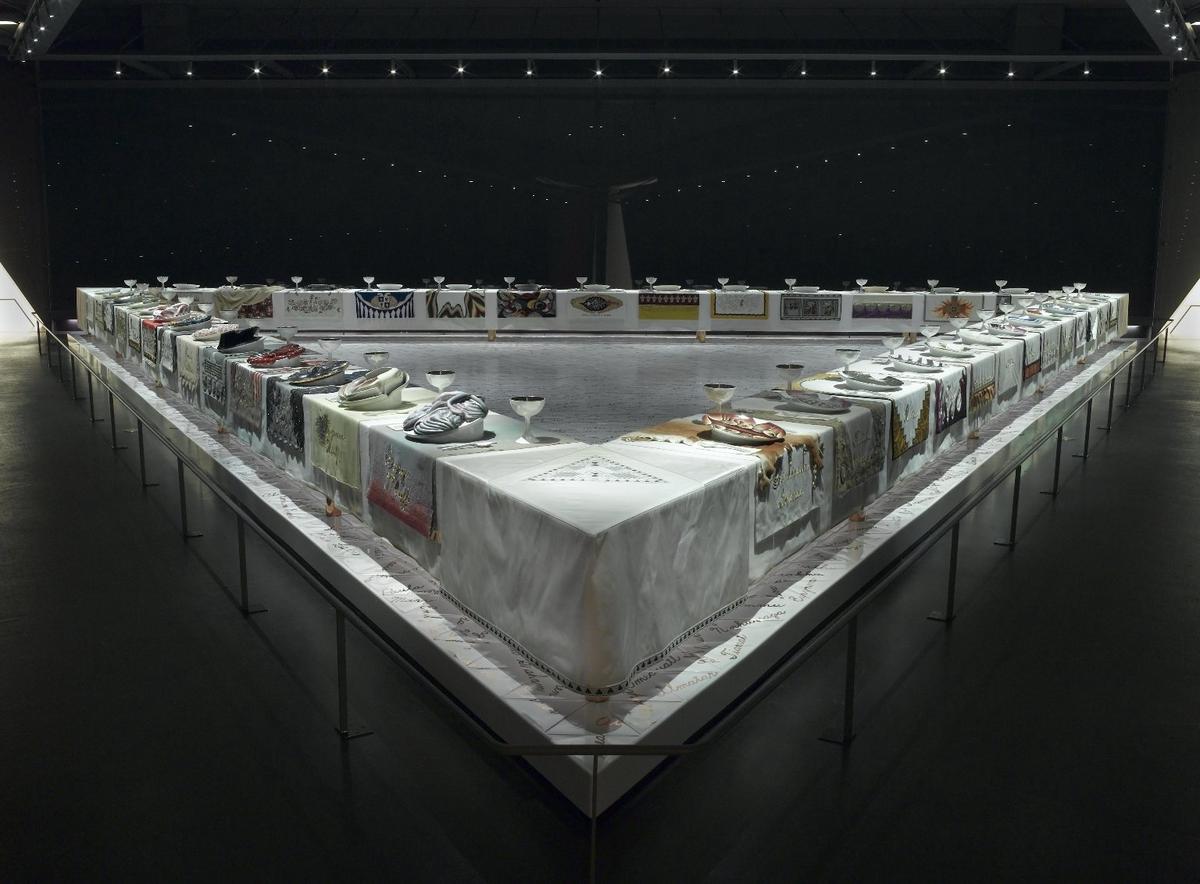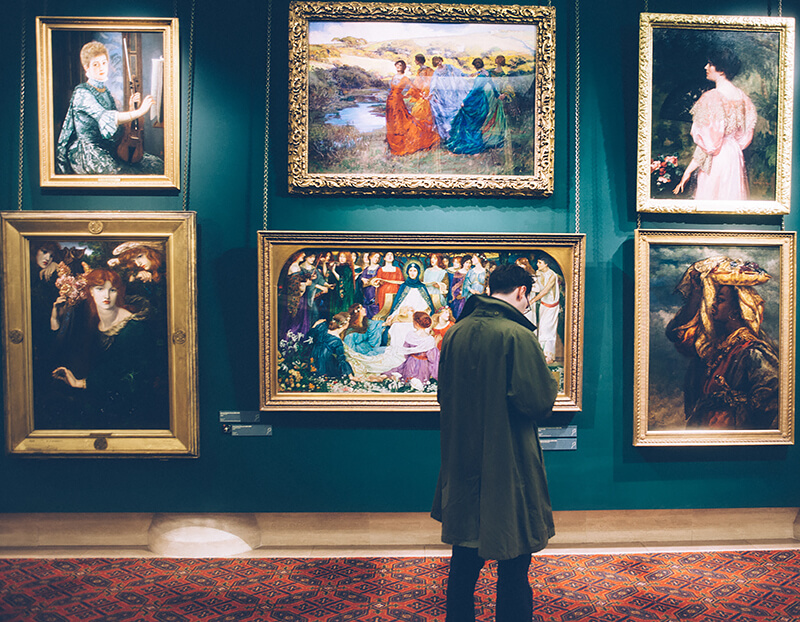Intersectional feminist theory offers a lens through which we can better understand the intricate web of art history. By considering the interplay of various social factors, this perspective reveals how different forms of discrimination have influenced the stories of women artists. This approach challenges traditional views and enriches our appreciation of art as a medium for dialogue and resistance.
Intersectional Feminist Theory
Intersectional feminist theory provides a clearer picture of how various systems of oppression intersect in art history. Kimberlé Crenshaw's work examines the confluence of factors like race, class, and gender that shape women's experiences in the arts.
Art isn't just about materials or final images; it's an ongoing dialogue about identity and resistance. This approach makes visible the often-invisible threads of racism, sexism, and classism woven through the stories of many artists.
Artists like Zanele Muholi capture the intimate experiences of black queer individuals through photography, challenging stereotypes and redefining community identity. Kehinde Wiley and Mickalene Thomas actively subvert historical representation norms, forcing conversations about who gets to be seen in art.
Mirrianne Mahn explores the thin line between artistic independence and societal restraints, illuminating how debates about identity politics and 'cancel culture' intertwine with conversations about art's boundaries.
In classrooms, students are encouraged to reflect on how issues of gender, race, and more have traditionally shaped the artistic sphere. By centering intersectional theory within discourse, a fuller understanding of art history emerges.
Ultimately, intersectional feminist theory lends a voice to those who have been marginalized, crafting a conversation as dynamic and evocative as art itself.
Feminist Art Movement
Emerging in the late 1960s, the feminist art movement served as both a bold proclamation and a necessary revolution within the art world. Pioneering figures like Judy Chicago and Miriam Schapiro set out to carve a space for women and minority artists who had long been sidelined.
Womanhouse, a groundbreaking collaborative art installation organized by Chicago and Schapiro, challenged the constraints prescribed to women in domestic spaces. Mary Beth Edelson's "Some Living Women Artists/Last Supper" openly scrutinized male-centric representations by reimagining Leonardo da Vinci's iconic tableau with notable female artists.
Artists like Barbara Kruger and the Guerrilla Girls used humor and sharp critique to spotlight gender biases. Performative and experiential art gained momentum, as seen in works like Carolee Schneemann's "Interior Scroll," which subverted traditional notions of femininity.
The movement's legacy laid the groundwork for the evolution of identity and activist art genres. Its enduring impact is woven into contemporary art practices, where discussions of identity, diversity, and justice continue to be essential threads in the fabric of art history.

Artistic Freedom and Intersectionality
Artistic freedom and intersectionality are intertwined concepts driving modern creative expression. Artists walk a tightrope between unleashed creativity and societal constraints, where the freedom to create must coexist alongside the responsibility of representing diverse experiences.
The current landscape, characterized by debates over political correctness and identity politics, often complicates the task of maintaining this balance. Some voice concerns that movements like "cancel culture" might stifle creativity, while others argue that this moment offers an opportunity to amplify neglected stories.
Mirrianne Mahn addresses this discourse, highlighting how intersectional perspectives enrich the dialogue surrounding art. Far from an attack on free speech, intersectionality emerges as a tool for fortifying art's role as a mirror reflecting the diverse patchwork of human experience.
The intersection of art and identity brings beneficial complications, forcing audiences and creators alike to grapple with who is seen within artistic landscapes. This isn't an adverse phenomenon but rather a necessary evolution that moves us toward inclusion.
As we continue this dialogue, the invitation remains open: to welcome the varied symphony of voices that further enriches our collective artistic fabric.
Contemporary Artists and Intersectionality
Contemporary artists are at the forefront of the conversation on intersectionality, using their works to address the intricate weave of race, gender, and other societal layers of discrimination.
Zanele Muholi's photographic series "Faces and Phases" brings us face-to-face with black queer identities, urging viewers to engage with stories often sidelined. Kehinde Wiley inserts black figures into traditionally white-dominated tableaux, prompting us to re-examine notions of power and legacy. Mickalene Thomas intertwines femininity, race, and sexuality with mixed media compositions that challenge traditional beauty standards.
These artists exemplify how intersectionality in art confronts and dismantles the status quo. They remind us that the stories we tell and consume must be expansive, rich with the multiplicity of human experience.
By embracing this approach, contemporary artists position us on the precipice of change, urging each observer to recognize the profound interconnectedness of our shared human journey. In their art lies the blueprint for a future that values diversity as an intrinsic and cherished part of our story.
Intersectionality in Art Education
The integration of intersectional perspectives is revolutionizing how students engage with both art history and contemporary art. These frameworks prompt educators to design curricula that probe beyond surface layers, examining an array of social exclusions that have shaped the artistic sphere.
Students dissect how systemic biases have historically dictated art valuation and visibility, breaking open discussions about who tells these stories and why it matters. This heightened awareness fosters an inclusive classroom environment, where diverse perspectives are essential for a holistic understanding of the subject.
By exploring intersectionality, students gain insights applicable to broader social contexts, cultivating empathy and a sense of social justice. They learn to view art as a reflective medium, illustrating the impacts of oppression and privilege, while celebrating resilience and creativity.
In this educational shift, the role of the art educator is both guide and co-learner, exploring rich intersectional stories alongside their students. This relational dynamic fosters a supportive space where students can comfortably explore the complexities of identity and its representation in art.
Intersectionality in art education signals a vibrant reimagining of the canon, one that reflects the diversity of human experience and equips students with the insights needed to shape cultural landscapes.
Intersectional feminist theory reshapes conversations about art, urging us to reconsider who is represented and why it matters. Through this lens, we are invited to engage with art in a way that is as dynamic and thought-provoking as the works themselves.
- Crenshaw K. Demarginalizing the Intersection of Race and Sex: A Black Feminist Critique of Antidiscrimination Doctrine, Feminist Theory and Antiracist Politics. Univ Chicago Legal Forum. 1989;1989(1):139-167.
- Chicago J, Schapiro M. Womanhouse. Los Angeles: California Institute of the Arts; 1972.
- Edelson MB. Some Living Women Artists/Last Supper. 1972.
- Benglis L. ArtForum Advertisement. ArtForum. 1974.
- Schneemann C. Interior Scroll. 1975.
- Chicago J. The Dinner Party. Brooklyn Museum; 1974-1979.
- Lacy S, Labowitz L, Lowe B. In Mourning and In Rage. 1977.
- Mayer M. El Tendedero (The Clothesline). Museum of Modern Art, Mexico City; 1978.
- Kruger B. Untitled (I shop therefore I am). 1987.
- Guerrilla Girls. THE ADVANTAGES OF BEING A WOMAN ARTIST. 1989.





















